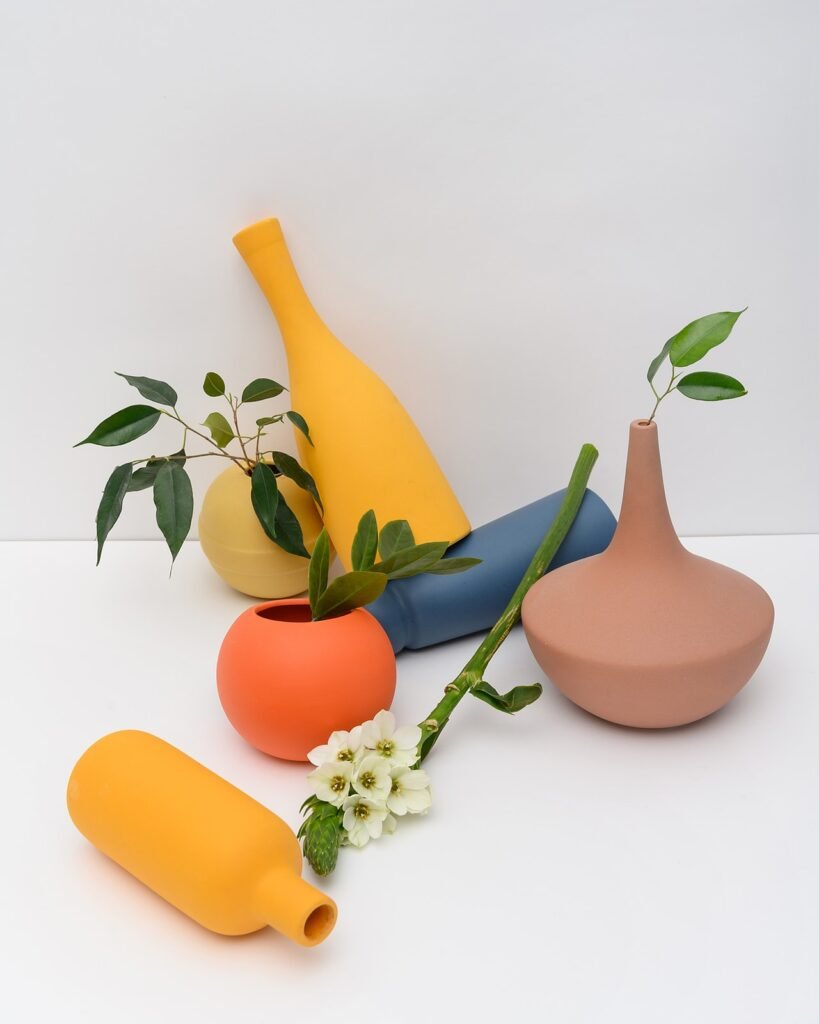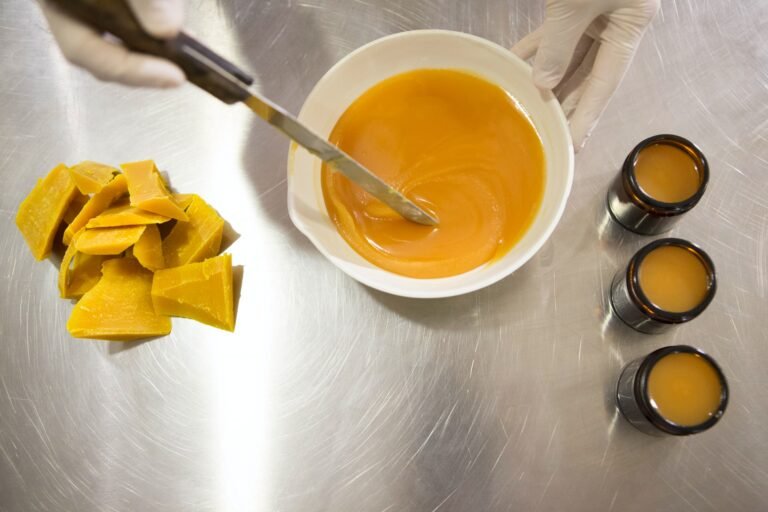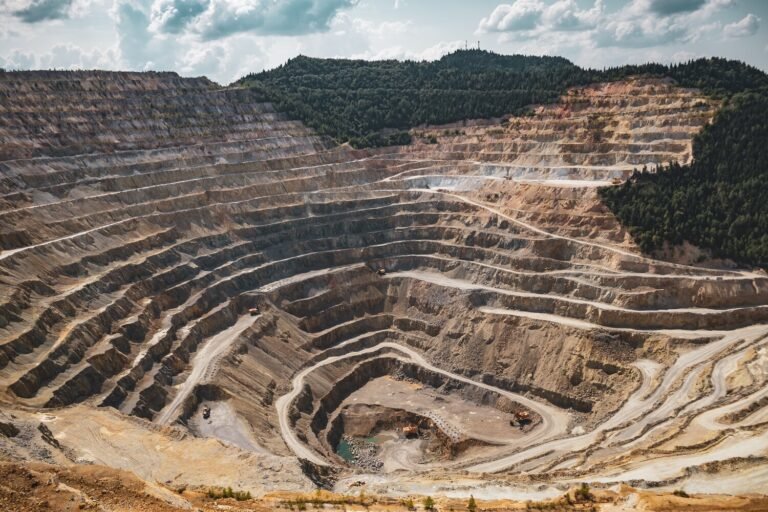What Is The Difference Between Clay And Ceramics? Important Facts
Clay and ceramics are often used to describe different materials for making pottery. Clay is a type of ceramic, but not all ceramics are made of clay. Is there a difference between clay and ceramics?
Clay and ceramics are such different things even though they look alike. Clay is a natural material that comes from the ground, and ceramics are various materials that harden when heated, including clay. Clay is a group of moistened minerals that are naturally found in the soil, containing aluminum silicates and crystalline silica.
I will explain further on clay and ceramics about its features, function, characteristics, and the differences between both of them. It is different, so you should know the material well to differentiate it.
Difference Between Clay and Ceramics
1. Clay
Where does clay come from? Clay can be found in the ground usually around river banks, streams or lakes. It is made from minerals, plant life, and animals that mixed all the ingredients of soil. Time by time, the water pressure breaks up the remains of flora, fauna, and minerals then pulverizes them into fine particles.
The features of clay are plasticity. The clay has a unique crystal structure of molecules and can be sticky and be able to form and retain shape by an outside force with added water.
Next features the particle size of clay. Clay is very tiny that is less than 2 microns and its particle structure of it is flat sheets slippery and sliding.
Clay is also metamorphosed by fire or temperature. This is because when subjected to enough heat, clay becomes hard and permanent just like a rock because it is metamorphosed from a plastic malleable material. The clay can last for thousands of years and it becomes other different physical properties when it is not fired.
The basic constituents of clay raw materials are clay minerals such as kaolinite, micas, and smectites. All of these materials had been used in the ceramic industry to produce porcelain, fine ceramics, coarse ceramics, cement, electro-ceramics, tiles, and refractories. These products are mainly used in sectors of economic importance such as agriculture, civil engineering, and the environment.
Next, I will explain the types of clay. Clay can be categorized into 5 types that are earthenware, stoneware, porcelain, ball clay, and fire clay.
- Earthenware pottery is made from porous and white clay which is fired in lower temperatures.
- Stoneware pottery is made at a higher temperature and because of that, the clay and the glazed are mixed together to create their own mixed layer. This result of this stoneware is a more durable material with a denser stone-like quality. The finishing result will be a waterproof product.
- Porcelain comes from a refined clay which is fired at very high temperatures of approximately 1,200–1,450°C. The finishing result will show that it is a shining material often white, very hard, and translucent in appearance.
- Ball clays are a material that fires at high temperatures and is either light grey or light buff. Last but not least fire clay also fires at high temperatures and tends to have a spot of iron which lends a speckled appearance once fired.
- Earthenware, Stoneware, and Porcelain are made of different clay. They are mixed with different minerals and fire at different temperatures. Because of that, the finishing products are different from the three of them.
The quality of the products will depend on the quality and purity of the clay that is used to create them. In general rule, Stoneware and Porcelain will be the two more durable forms of ceramic, which are commonly used as tableware at home.
In everyday use, people generally refer to clay as a ceramic figure and reserve the word pottery for a container or pot. For example, things that are made from clay are vases, a cup, and a bowl. Clay containers can be made on a potter’s wheel or they can be made by hand.

2. Ceramics
Ceramics are classified as inorganic and nonmetallic materials that are essential in our daily life. Ceramics are generally made by taking mixtures of clay, earthen elements, powders, and water then shaping them into desired forms. Once the ceramics had been shaped, it was fired in a high-temperature oven known as a kiln.
The main features of ceramics materials are it has high compression resistance, low fracture, and toughness. Besides that, It has good polishable surface properties, high surface tension, and a high humidity degree. The reason why ceramics is durable is that it contains grains of silicon which ensures great hardness and strength. Next, ceramics is a material that is heat resistant so that it can survive in high temperatures and the material of ceramics is not vulnerable to chemical corrosion. Last but not least, ceramics are low electrical and thermal conductivity.
The examples of ceramics are more than pottery and dishes such as clay, bricks, tiles, glass, and cement. Ceramics materials are used in electronics because it depends on their composition. They might be semiconducting, superconducting, ferroelectric, or an insulator. The ceramics can be seen used in traditional purposes as well as for industrial purposes. For traditional purposes, ceramics are being used in whiteware, tiles, bricks, sewer pipe, pottery, and abrasive wheels. For industrial purposes, ceramics are being used widely in turbine, automotive, aerospace components, heat exchangers, semiconductors, seals, and cutting tools.
For example, ceramics had been used in the space industry because their low weight and composite ceramics are used to create the nose cones of spacecraft. Ceramics also had been used in electronic devices such as televisions that have ceramic insulators, computers that have silicon chips, and electric motors that are included in vacuums and blenders. Ceramics are used in modern life whether we realize it or not and the obvious example is for making tiles. Roofs, bathrooms, and kitchens are mostly covered in ceramic tiles. Ceramics can be glazed with different colors and printed with any design based on different people’s tastes.
Next, the majority of kitchen cookware is made from ceramics. Ceramic is a common material in the kitchen and can be found in a simple mug that holds your tea and coffee. Ceramic knives are also common because they are one of the hardest knives you can buy yet extremely lightweight.
Last but not least, ceramics are also used in making cars. Ceramic can capture toxic materials and help to decrease pollution. They are a major contributor in the automotive industry as ceramics are used in hybrid and eco-friendly vehicles for components that can be found in every aspect of a vehicle.
Differences Between Clay and Ceramics
| Clay | Ceramics | |
| Natural soil material that comes from the ground consist of clay minerals | Definition | Inorganic and nonmetallic materials that get hardened at high temperature |
| Made fully by clay | Ingredients | Made not only by clay but have other added materials such as glazes |
| Type of ceramics | Type | Not all ceramics are made of clay |
| Being used to make a container of some kind | Usage and Application | Being used widely in kitchenware, household, and electric fuses |
| Contains moistened minerals such as aluminum silicates and crystalline silica | Composition | Contains metal oxides such as zirconium oxide, silica oxide, or silica carbide |
| Clay kilns are good as earthenware kilns are good for low-fire clay handling | Kiln Operation | Ceramic kilns are good for high-fire clay handling |
| Cheap | Cost | Expensive |
Difference Between Clay and Terracotta
Clay is a broad phrase that refers to a variety of materials that may be used to model and create three-dimensional objects. Natural resources, such as minerals, can be used to make clay. In this article, you can learn more about finding clay in the wild.
“Baked earth” is an Italian term for terra-cotta. A glazed or unglazed piece of pottery produced with organic clay and burnt in a potter’s kiln is referred to as terra-cotta. Terra-cotta is a term used by archaeologists and art historians to describe clay artifacts manufactured without the use of a potter’s wheel, such as sculptures or tiles.
The main difference between clay and terracotta is that Clay is a raw material, but terra-cotta is clay that has been molded and burned. Terra-cotta artifacts are often formed of any sort of organic clay, but earthenware clay has the brown-orange hue associated with the term.
Terracotta clay is a rich, red-orange clay that may be found all over the world. This color comes from the iron component, which combines with air to produce various colors such as orange, red, yellow, and even pink. Terracotta is not, therefore, pure clay. Most significantly, terracotta is an earthenware material.
What are The 4 Main Types of Clay?
Earthenware clay, Stoneware clay, Ball clay, and Porcelain are the four varieties of clay. They can all be used to manufacture pottery, but the finished result will vary greatly because of the textures, colors, and flexibility of each.
- Earthenware clays have a low fire temperature. Low fire clay is burnt at temperatures ranging from 1479 to 2109 degrees Fahrenheit (804-1154C). The glaze firing is required to make earthenware clay watertight and hence appropriate for dinnerware.
- Stoneware clays typically mature when burned in the mid-to-high temperature range. It is used to produce tableware and art ware.
- Ball clay is a powdered raw material that is often supplied. It isn’t employed as a clay body in and of itself. Ball clays are fine-grained, extremely flexible clays used primarily in the production of ceramic whiteware and sanitary ware, where they are valued for their fluidity, unfired strength, and pale color after firing.
- Porcelain is a high-fire clay, which means it can be fired at temperatures as high as 2232F (1222C). Porcelain can appear delicate and sophisticated while also being robust and non-porous. As a result, it has a wide range of applications. It may be used to create intricate sculptural art.







